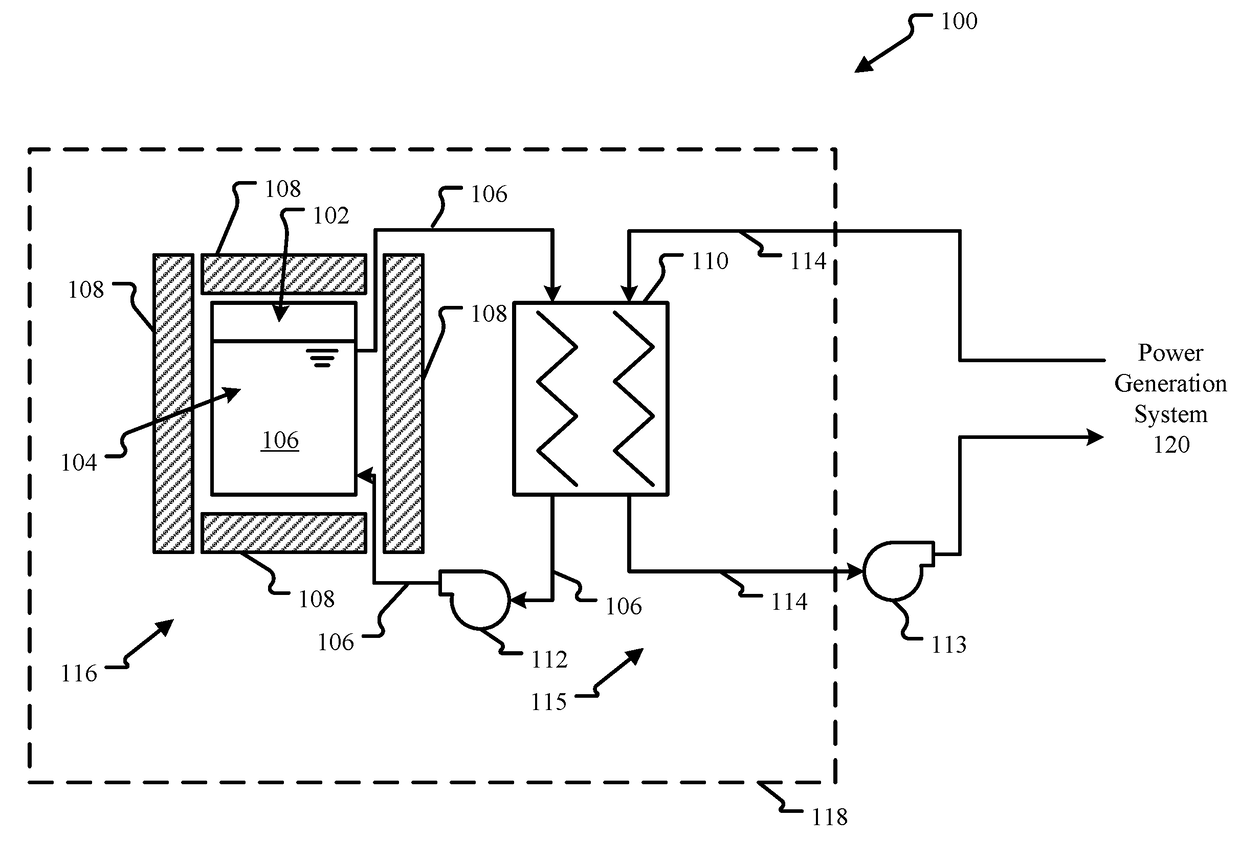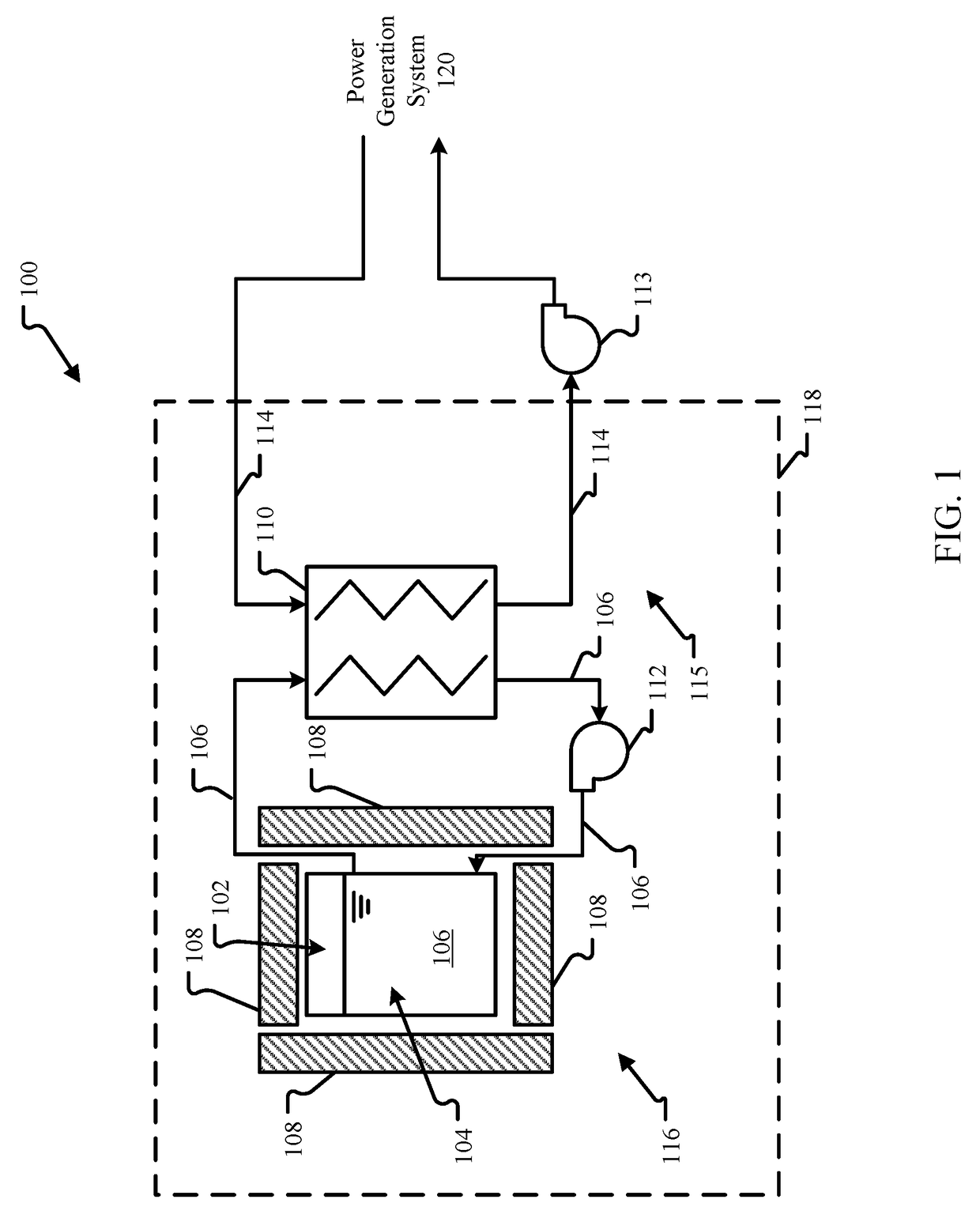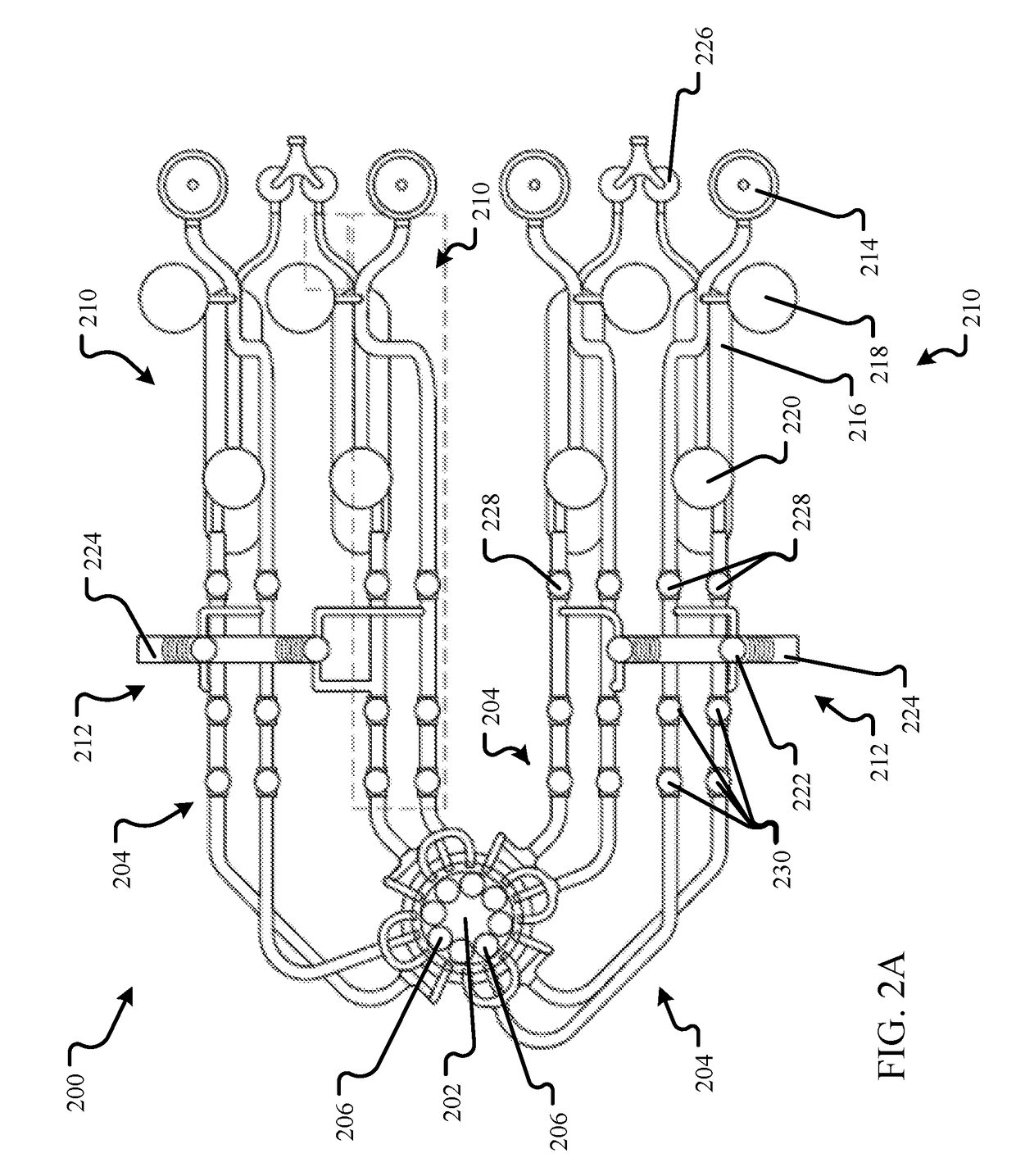Molten fuel reactor cooling and pump configurations
- Summary
- Abstract
- Description
- Claims
- Application Information
AI Technical Summary
Benefits of technology
Problems solved by technology
Method used
Image
Examples
Embodiment Construction
[0012]This disclosure describes various configurations and components of a molten fuel nuclear reactor. For the purposes of this application, embodiments of a molten fuel reactor that use a chloride fuel, such as a mixture of one or more fuel salts such as PuCl3, UCl3, and / or UCl4 and one or more non-fissile salts such as NaCl and / or MgCl2, will be described. However, it will be understood that any type of fuel salt, now known or later developed, may be used and that the technologies described herein may be equally applicable regardless of the type of fuel used. For example, a fuel salt may include one or more non-fissile salts such as, but not limited to, NaCl, MgCl2, CaCl2, BaCl2, KCl, SrCl2, VCl3, CrCl3, TiCl4, ZrCl4, ThCl4, AcCl3, NpCl4, AmCl3, LaCl3, CeCl3, PrCl3 and / or NdCl3. Note that the minimum and maximum operational temperatures of fuel within a reactor may vary depending on the fuel salt used in order to maintain the salt within the liquid phase throughout the reactor. M...
PUM
 Login to View More
Login to View More Abstract
Description
Claims
Application Information
 Login to View More
Login to View More - R&D
- Intellectual Property
- Life Sciences
- Materials
- Tech Scout
- Unparalleled Data Quality
- Higher Quality Content
- 60% Fewer Hallucinations
Browse by: Latest US Patents, China's latest patents, Technical Efficacy Thesaurus, Application Domain, Technology Topic, Popular Technical Reports.
© 2025 PatSnap. All rights reserved.Legal|Privacy policy|Modern Slavery Act Transparency Statement|Sitemap|About US| Contact US: help@patsnap.com



